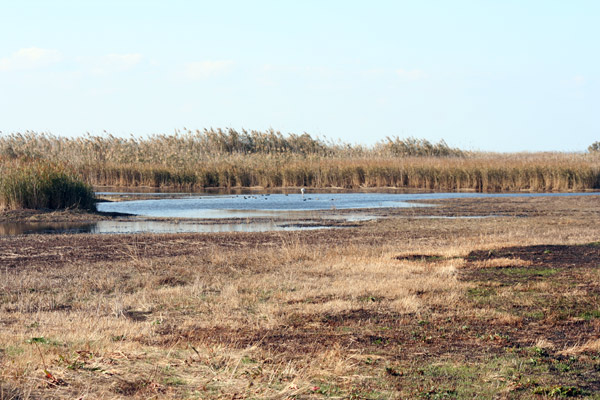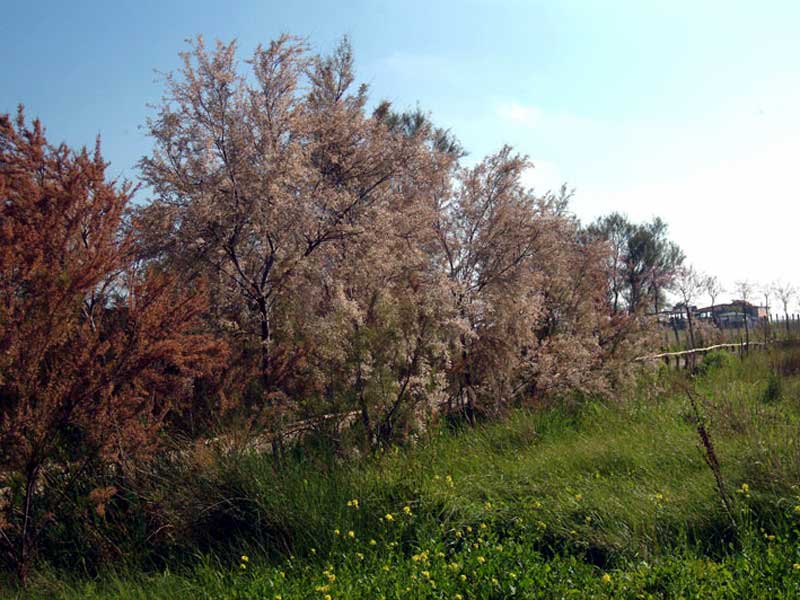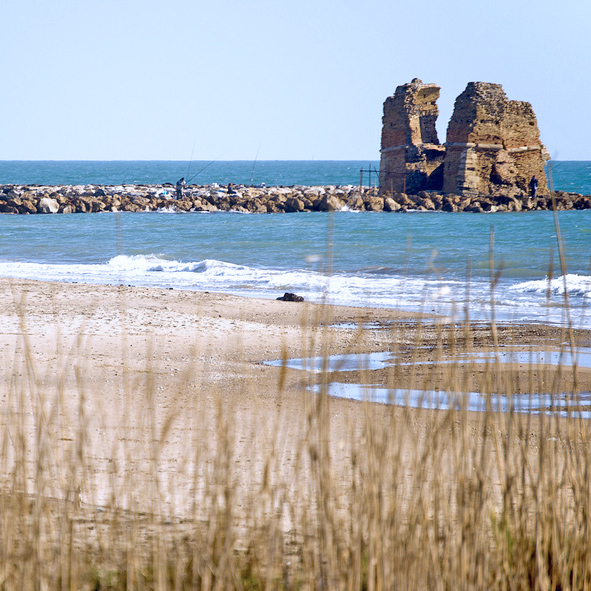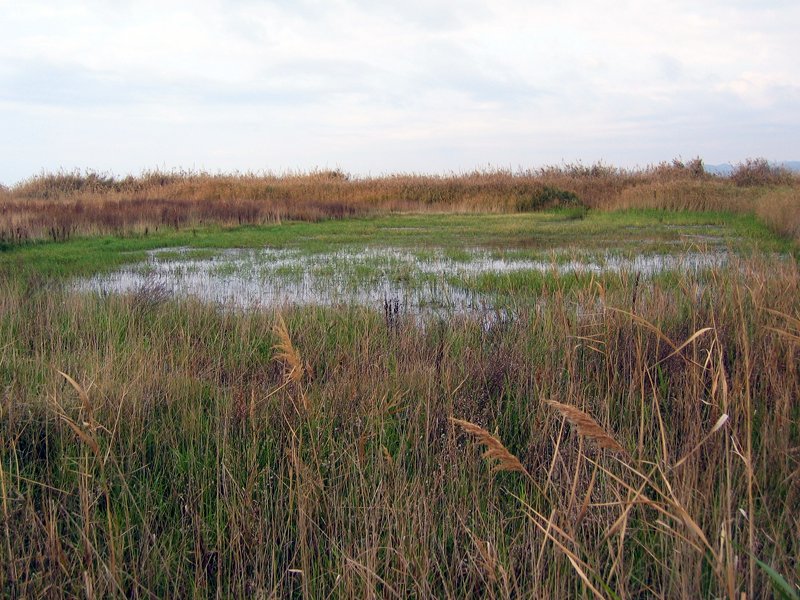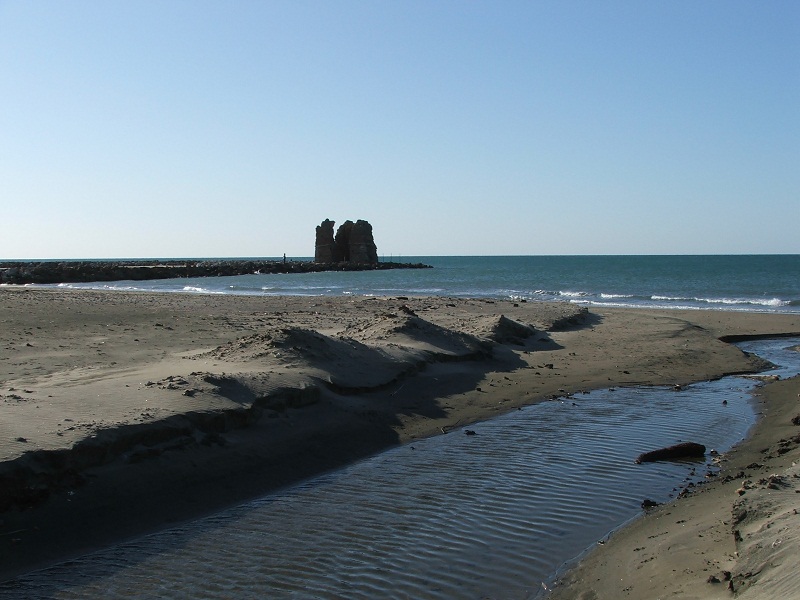
Natural Monument in Torre Flavia Swamp
This post is also available in:
 Italiano (Italian)
Italiano (Italian)
This swampland is a natural haven for migratory birds and stretches along 92 acres. It is made of clayey-silty soil rich in organic material of vegetable origin, on which a carpet of the rotting organic substance is responsible for the blackish mud. An artificial pier leads to the ruins of the ancient Torre Flavia, eroded away from the beach.
This area stretches between Cerveteri and Ladispoli, as typical coastal wetlands. Behind the beach runs a dune cordon that defines the actual swamp full of pools, ponds, and canals, covered by dense reeds.
FLORA
The flora is mostly made of plants that benefit from the humid environment, with different degrees of salinity.
In the innermost and farthermost part from the sea, there are emerged patches of herbaceous species like the hairy sedge (Carex hirta). Where the water is fresher, typical species are present, like the common water-crowfoot (Ranunculus aquatilis), while near the shore there are a lot wetland perennial reeds (Phragmites australis).
FAUNA
On the shore, many migratory waterbirds thrive, including ruddy turnstones, Eurasian oystercatchers, and little ringed plovers. Brackish waters are then proving the perfect habitat for small plovers, Kentish plovers, common, and green sandpipers, and black-winged stilts. There are also many types of ducks, like mallards, pintails, garganeys, and Eurasian teals. Grey herons and little egrets are also abundant. Among the dense reeds, many common reed buntings, great reed warblers, and Eurasian reed warblers can be found.
Mammal species include Eurasian water shrews, while amphibious ones are represented by marsh frogs, European tree frogs, and there are also some grass snakes.
This post is also available in:
 Italiano (Italian)
Italiano (Italian)
Contatti
Via Tiburtina 691 - 00159 Roma(RM)
06 67663321
areeprotette@provincia.roma.it
